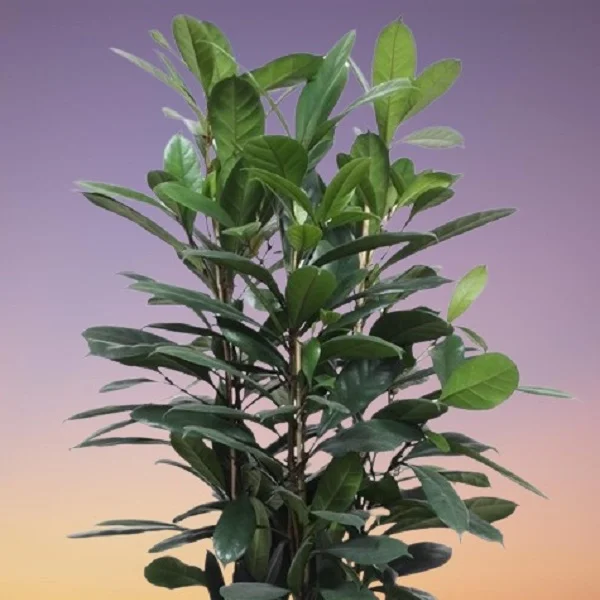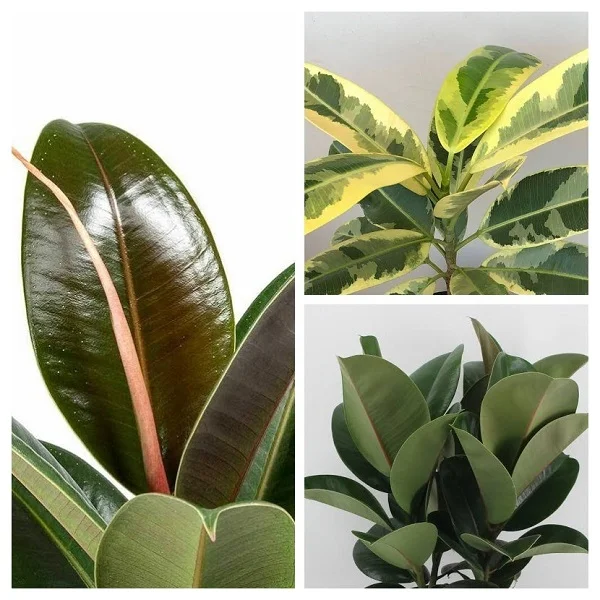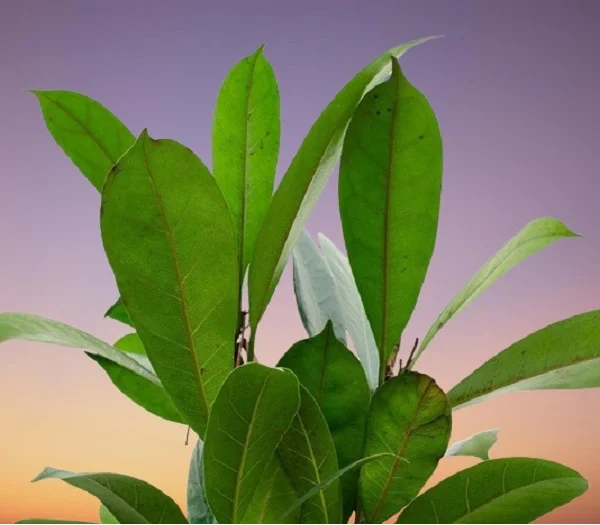How to Grow and Care for Variegated Triangle Leaf Fig Indoors
Some links in this post may be affiliate links
Ficus triangularis 'Variegata' (Variegated Triangle Leaf Fig) requires bright light with some direct sunlight, average warmth, high humidity and moderately moist, fertile, well-drained soil coupled with monthly feeding in the growing season.
Variegated Triangle Leaf Fig is an evergreen, shrubby plant which bears glossy, triangular-shaped, dark-green-variegated leaves with creamy-white veins and edges.
Ficus triangularis 'Variegata' is one of the popular Ficus varieties on account of its spectacular foliage and ability to tolerate drought and frost conditions.
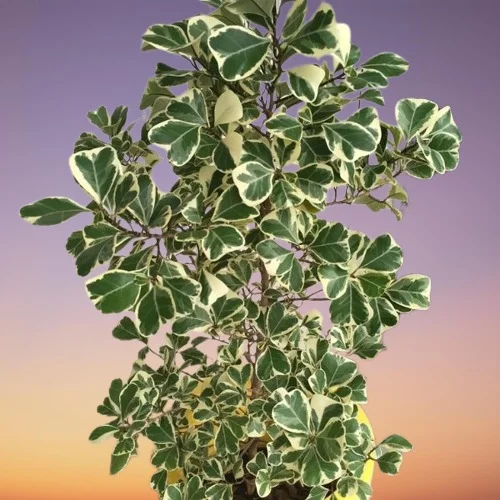
Botanical name: Ficus triangularis 'Variegata'
Family: Moraceae
Common names: Variegated Triangle Leaf Fig
Origin
Ficus triangularis 'Variegata' is native to South and West Africa.
Size
Variegated Triangle Leaf Fig can grow to a height of 4-6 feet and about 4 feet wide when grown indoors and is ideal for a shelf or table-top in the early stages. A mature plant is perfect for floor placement. It is one of the best large indoor plants for the living room on account of its size and magnificent foliage.
Toxicity
Like other plants in the Moraceae family, Variegated Triangle Leaf Fig (Ficus triangularis 'Variegata') is toxic to humans and pets as indicated by Pet Poison Helpline. Ficus plants produce a milky white latex which is an irritant to the eyes and the skin. If ingested it can cause irritation in the mouth, drooling, vomiting, diarrhea, loss of appetite and abdominal pains.
Where to Buy
Variegated Triangle Leaf Fig is a spectacular plant for your collection. You may acquire the plant online from Etsy (Link to Etsy).
Ficus triangularis 'Variegata' Care Indoors
Ficus triangularis 'Variegata' (Variegated Triangle Leaf Fig) prefers bright light with 4-6 hours of direct sunlight, average warmth of 16-290C, humidity of 60-70% and moderately moist, rich, well-drained, all purpose soil coupled with monthly feeding during the growing season.
Variegated Triangle Leaf Fig requires regular pruning to keep it neat and also encourage a bushy growth. Repotting is only needed when it becomes pot-bound. Keep reading for more on these growing conditions and how to achieve them.
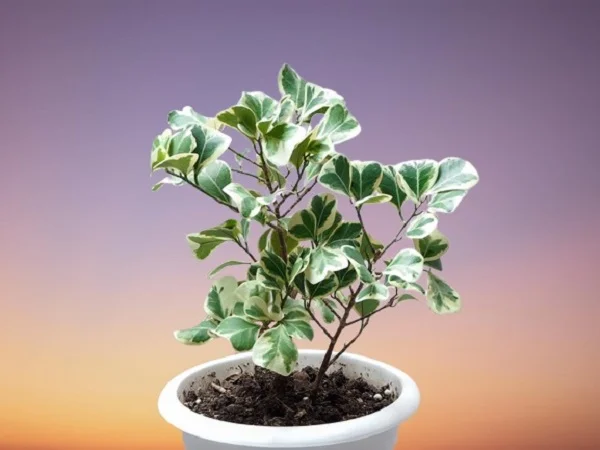
Watering
Water Variegated Triangle Leaf Fig liberally during the growing season until water comes out through the drainage holes and allow the top 2-3 inches of soil to dry out between waterings to maintain the soil moderately moist.
Lessen watering during the cold season to maintain the soil barely moist as growth is reduced at this time. Use room temperature water as cold water can cause reduced growth and leaf drop.
Ascertain that the pot has a drainage hole to prevent the soil from getting soggy as it can lead to leaf drop and root-rot and death of the plant.
Variegated Triangle Leaf Fig is sensitive to chlorine and other chemicals dissolved in water. Use only chlorine-free water to water the plant to avoid spots on the leaves.
Light Requirements
Variegated Triangle Leaf Fig grows best in bright light with 4-6 hours of direct morning or late afternoon sunlight to enhance variegation. Avoid exposing it to hot midday sunlight as it can cause sunscorch (brown) marks on the leaves and eventual leaf drop.
It can adapt to lower light conditions but it will grow much slower and may lose its variegation.< If light is too little it may cause yellowing and leaf drop. Thus, instal in a grow to supplement the light. Check out these full spectrum grow lights on Amazon.
Turn the pot regularly to ensure that the plant receives light on all sides for even growth and prevent leggy growth.
Temperature and Humidity
The best temperature for Variegated Triangle Leaf Fig is an average warmth of 16-290C. Keep it away from drafts to prevent sudden changes in temperature as they can cause leaf drop.
Variegated Triangle Leaf Fig can grow in average room humidity but requires above average humidity of 60-70% to thrive. To raise humidity, set the pot on a wet pebble tray or use a cool mist humidifier. Learn more on how to increase humidity for houseplants.
Regularly clean the leaves by damp-wiping with a soft cloth to get rid of dust and also discourage pest infestation.
Fertilizer
Feed Ficus triangularis 'Variegata' every 4 weeks during the growing season with a balanced, water-soluble fertilizer. Do not feed in the cold season as growth is minimal and feeding at this time can cause fertilizer burn.
Potting Mix
Variegated Triangle Leaf Fig soil should be rich in organic matter and well-drained to prevent it from getting soggy while providing the required nutrients. Most all purpose potting mixes are ideal for this plant.
Repotting
Repot Variegated Triangle Leaf Fig at the beginning of the growing season only when it has become root-bound. Repotting every 1-2 years is adequate for this plant. Avoid frequent repotting as it prefers to be pot-bound.
Repot only when it has outgrown its current pot; when roots begin to grow through the drainage holes. Use a pot 1 size larger and one that has a drainage hole to prevent the soil from getting soggy. Never allow the roots to sit in soggy soil as it can result in leaf drop and root-rot. Take a look at these pots with multi mesh drainage holes on Amazon.
For a large Ficus triangularis 'Variegata' which may be difficult to handle, annually replenish the top 2-4 inches of soil with fresh soil while taking care not to injure the roots.
Pruning
Pruning Variegated Triangle Leaf Fig is easy. Remove dead and yellow leaves to maintain the plant neat. When the plant has reached maximum height or it has become leggy, cutback the branches to rejuvenate growth and also encourage a bushy, compact growth. You may use the foliage emanating from the pruning to propagate new plants.
Propagation
Ficus triangularis 'Variegata' (Variegated Triangle Leaf Fig) can be propagated during the growing season by air layering or by stem and stem-tip cuttings.
How to Propagate Variegated Triangle Leaf Fig by Air Layering
Air layering involves notching the stem of a healthy Variegated Triangle Leaf Fig and coating the notch with a rooting hormone.
Surround the notched area with damp moss and cover the notch with a polythene film or clear plastic wrap.
Once the roots have formed, sever the stem just below the covered part. Remove the polythene or plastic wrap and carefully pot the rooted cutting in moist well-drained soil.
Ensure the pot has a drainage hole to prevent the soil from getting soggy as it can lead to rotting. New shoots will sprout from the shortened stem of the old plant into a beautiful bushy plant.
Place the new Ficus triangularis 'Variegata' in a warm, brightly-lit spot and maintain the soil moist until the plant is well established after which you can begin routine care.
How to Propagate Variegated Triangle Leaf Fig from stem cuttings
Take non-woody stem or stem-tip cuttings about 6 inches long from a healthy Variegated Triangle Leaf Fig. Strip off the lower leaves from the cutting and retain 2-3 leaves on top.
Allow the sap to dry and then dip the lower cut end cutting in a rooting hormone to hasten rooting.
Insert the cutting in moist rooting soil. Ensure that the rooting container has adequate drainage to prevent the soil from getting soggy to avoid rotting of the cuttings.
To enhance rooting of the cutting, create a mini-greenhouse by covering the set up with a clear polythene bag or sheet.
Ensure the leaves do not touch the bag or the sheet too much by propping it up with sticks.
Place the set up in warm, brightly-lit spot and maintain the soil moist through out until new growth emerges.
New growth indicates that the cutting has rooted. In about 3-4 weeks, rooting will have taken place.
Gradually over a period of two weeks, remove the plastic cover to acclimatize the new plant.
In 4-6 months, there will be adequate root development and you can transplant the new plants into individual pots after which you can begin Ficus triangularis 'Variegata' routine care.
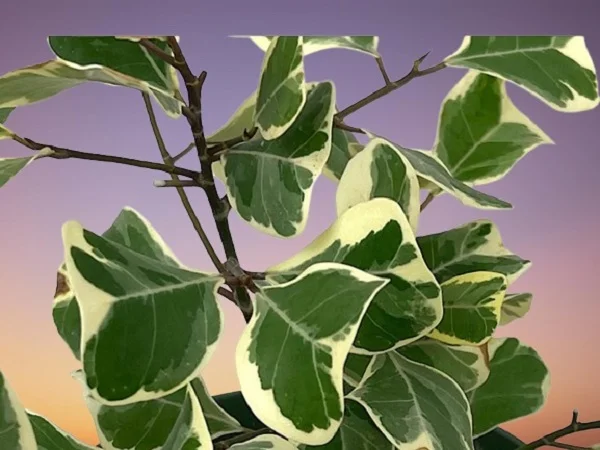
Ficus triangularis 'Variegata' Problems
Ficus triangularis 'Variegata' (Variegated Triangle Leaf Fig) problems include leaf drop, brown leaves, drooping leaves, diseases and pests among others. Keep on reading on for more details on these problems and how to fix them.
Pests
The common pests in Variegated Triangle Leaf Fig are aphids, mealy bugs, scales and spider mites. Isolate the affected plant to prevent spread to other plants. Learn how to identify and get rid of pests in houseplants.
Diseases
Variegated Triangle Leaf Fig is prone to root-rot disease which is enhanced by soggy soil. Ensure there is free drainage of both the soil and the pot and also reduce watering during the cold season. Read more on how to treat root-rot disease in houseplants.
Drooping leaves
Drooping leaves in Variegated Triangle Leaf Fig are due to a number of varied reasons. One reason is incorrect watering; either underwatering or overwatering. Water the plant liberally during the growing season while allowing the top 2-3 inches of soil to dry out between waterings. Reduce watering during the cold season but do not allow the soil to dry out completely; maintain the soil moderately moist. Read more on how to water indoor plants the right way.
Related: 13 Reasons Why Rubber Plant Leaves are Drooping & How to Fix Them
Leaf drop (loss)
There are many and varied causes of leaf drop in Variegated Triangle Leaf Fig. One possible cause of leaf drop is sudden changes in the growing conditions. This is likely to occur when you bring the plant home or when you move it to a new location in the home.
When you bring the plant home, place it in bright light with 4-6 hours of direct morning or late afternoon sunlight and warm conditions. Water it liberally during the growing season while allowing the top 2-3 inches of soil to dry out between waterings. It may loss a few leaves but will eventually settle.
If you need to move the plant to a new location in your home, do so gradually to acclimate it to the new conditions. For instance, if you want to take it outside, move it to a shaded place first before you can take out under bright light.
The second possible cause of leaf drop in Ficus triangularis 'Variegata' is extremely cold or hot temperatures due to drafts. Extreme temperatures; either too high or too low (outside the above range) will affect the normal functioning of the plant systems.
Too high temperatures will cause excessive loss of water leading to wilting and leaf drop while too low temperatures cause the plant to stop growing and begin to die. Leaf drop is one of the signs of a dying plant. Check out this guide on understanding temperature for houseplants.
The third possible cause of leaf drop in Variegated Triangle Leaf Fig is too little light. Move the plant to a brighter spot and ensure it is receiving bright light with 4-6 hours of direct sunshine or instal a grow light if the natural lighting is insufficient. Read more on understanding light for houseplants.
Related: 14 reasons why Rubber Plant is dropping leaves and how to fix them
Loss of lower leaves
Loss of lower leaves is a normal occurence in Variegated Triangle Leaf Fig. As it matures, it losses the lower leaves leaving a bare stem with a crown of leaves at the top. Cutback the stem at the desired height to rejuvenate growth. New growth should sprout just below the cut into a new bushy plant.
Brown leaf tips and edges
Variegated Triangle Leaf Fig will grow in ordinary room humidity but when the temperatures are too high it may develop brown leaf tips and edges due to too low humidity. Set the pot on a wet pebble tray to raise humidity. You may also grow the plant in the moist areas in the home like the bathroom and laundy area if the lighting is adequate.
You liked it? Share on social media.
Related Content
Amazon Associates Disclosure
Homeplantsguide.com is a participant in the Amazon Services LLC Associates Program, an affiliate advertising program designed to provide a means for sites to earn advertising fees by advertising and linking to amazon.com.



